- Home
-
Admissions
-
Academics
-
Students
-
Research
-
Research Centers
- Cancer Research Center
- Center for Excellence in Development Disabilities Education, Research & Service (CEDDERS)
- Center for Island Sustainability (CIS)
- Marine Laboratory
- Micronesian Area Research Center (MARC)
- UOG Land Grant | agInnovation Research Center
- Water and Environmental Research Institute (WERI)
-
Programs and Departments
- Guam EPSCOR
- Guma' Tinemtom - Micronesia Data Laboratory
- Pacific Islands Climate Adaptation Science Center (PI-CASC)
- Pacific Islands Cohort on Cardiometabolic Health (PICCAH)
- Research Corporation of UOG
- RFK Memorial Library
- UOG Press
- UOG Sea Grant
- University Libraries Digital Team
- NASA Guam Space Grant
- NASA Guam EPSCoR
-
Research Centers
-
Outreach
- Giving
- Alumni
-
About
Marine Lab relocates corals on Merizo boat ramp
Marine Lab relocates corals on Merizo boat ramp
Marine Lab relocates corals on Merizo boat ramp
3/25/2019
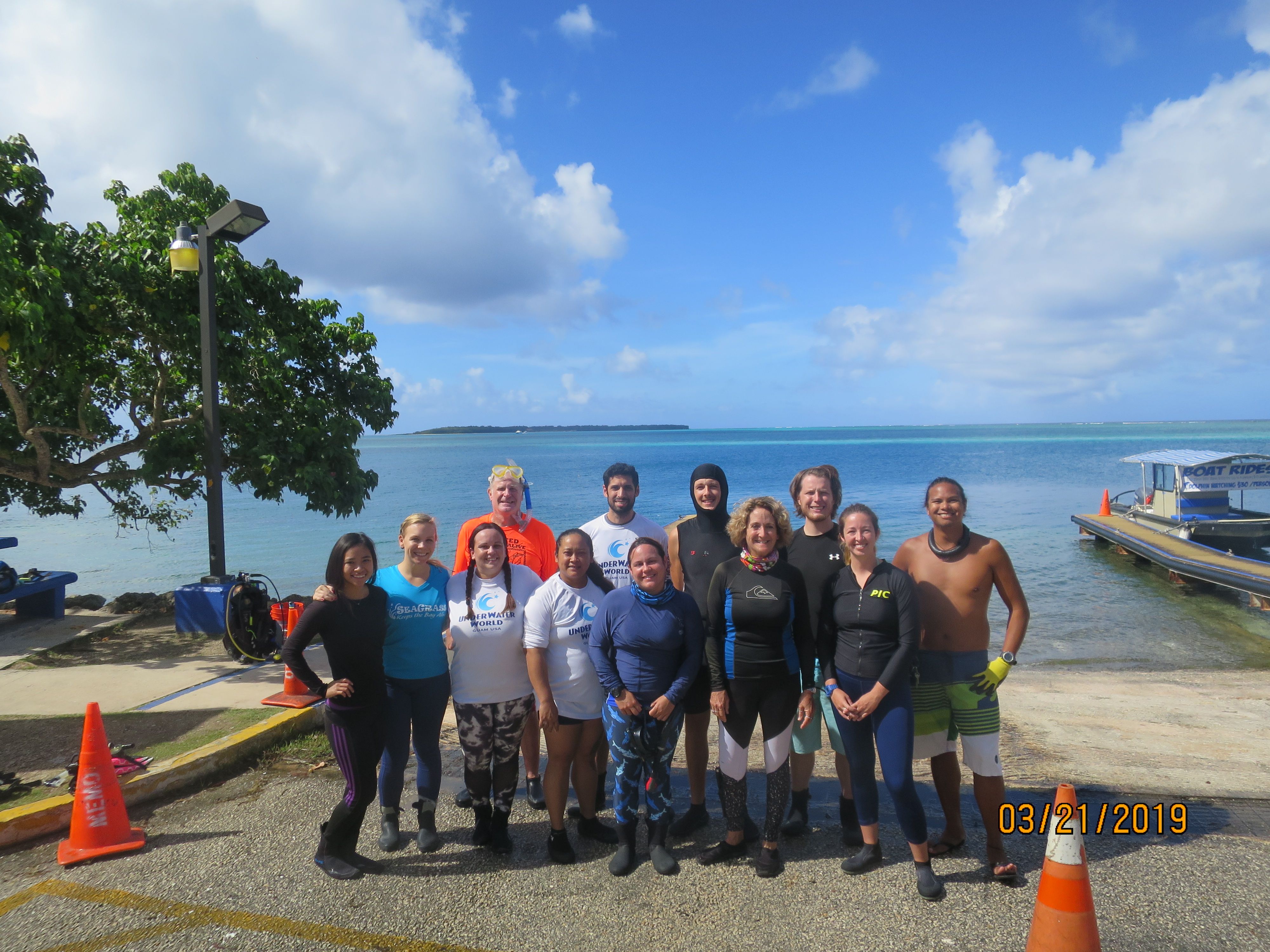
The coral transplanting team included individuals from the University of Guam Marine Lab, The Nature Conservancy, UnderWater World, and the Division of Aquatic & Wildlife Resources with the Guam Department of Agriculture. (Back row, from left) Brent Tibbatts; Rafael Calderón; Colin Lock; Justin Berg; Farron Taijeron; (front row, from left) Ka'ohi Kawahigashi; Coco Sartor; Sara Hamilton; Maylanie Balajadia; Mariel Cruz; Laurie Raymundo; and Claire Moreland-Ochoa.
Boaters now have fewer obstructions at the Merizo Pier boat ramp. The University of Guam Marine Laboratory was authorized by the Department of Agriculture to relocate corals from the ramp to a nearby reef.
Corals are protected by law, and a permit is required to move any coral in Guam’s waters.
“We believe that it is in the public’s best interest to move these corals,” said Celestino Aguon, chief of the Division of Aquatic & Wildlife Resources at the department. “The relocation will improve boating access and minimize damage to the corals from boats.”
Local residents have raised concerns about the corals growing on the ramp for some time, but repeated coral bleaching events made it risky to relocate them until now.
“Transplanting is stressful for corals,” said Laurie Raymundo, the Marine Lab’s acting director. “Conditions need to be right, and the corals need to be handled carefully to survive the move.”
Raymundo is an expert on coral restoration and developed a plan to safely transplant the corals to their new location. She led the effort, supported by Marine Lab students and personnel from partner organizations including The Nature Conservancy and UnderWater World Guam.
The Marine Lab has been working with government agencies to improve local capacity for reef restoration and to test new methods such as coral propagation and transplanting. This project will build capacity for transplanting, while protecting these at-risk corals.
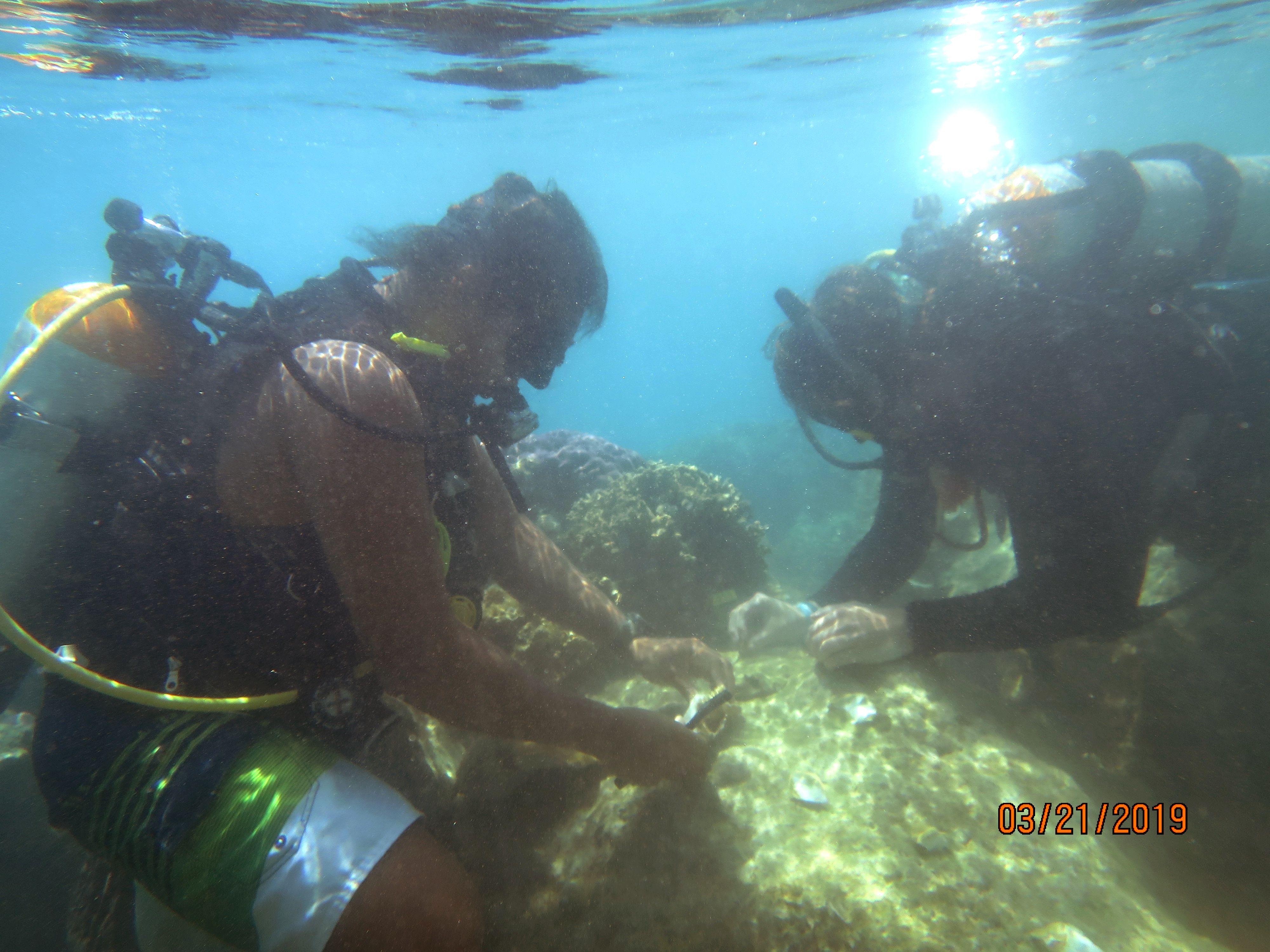
Farron Taijeron of The Nature Conservancy, left, and Claire Moreland-Ochoa of the University of Guam Marine Laboratory attach a removed fragment of coral to an appropriate substrate.
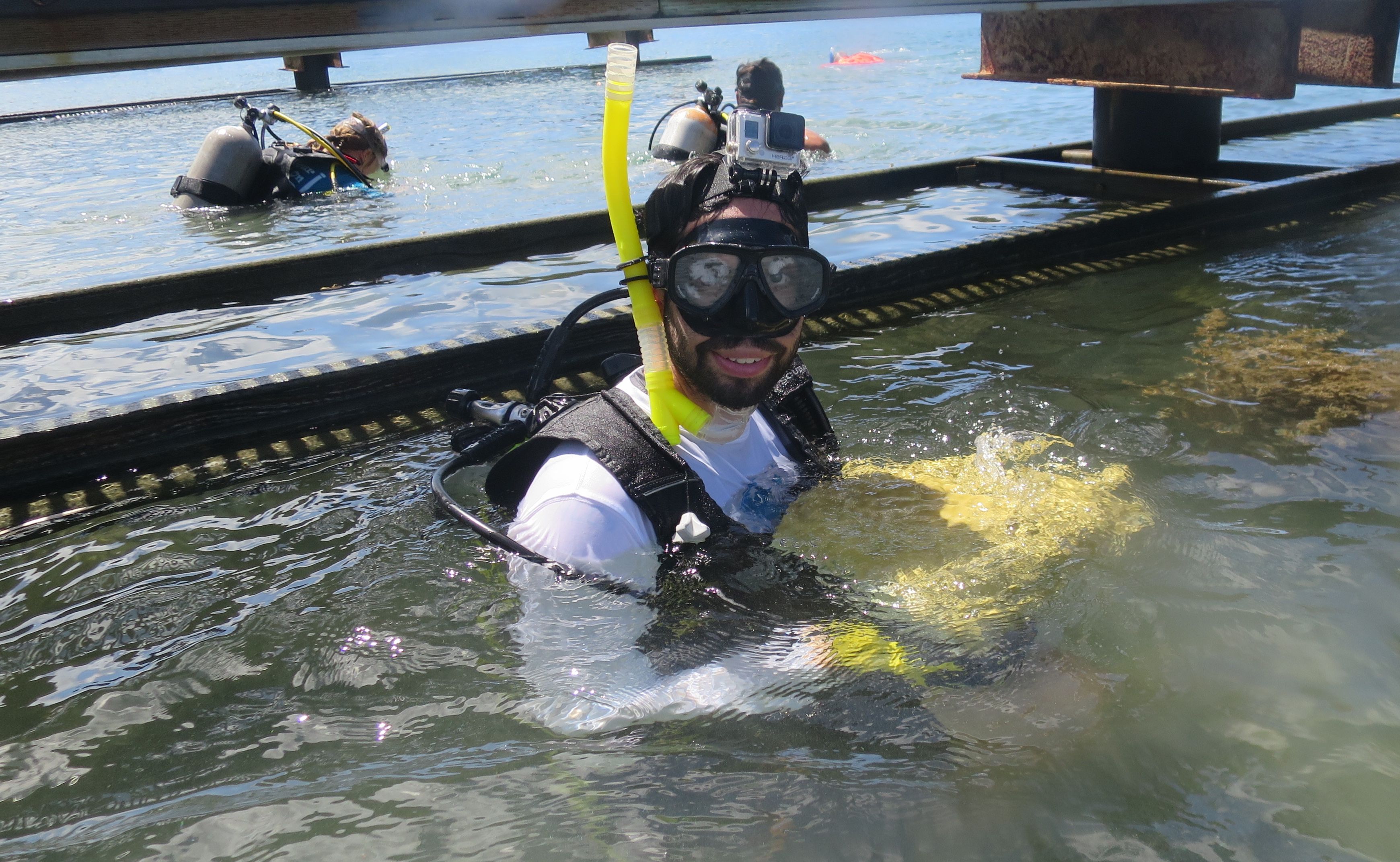
Rafael Calderón of UnderWater World holds a large colony removed from the boat ramp that he transported over to the recipient site.
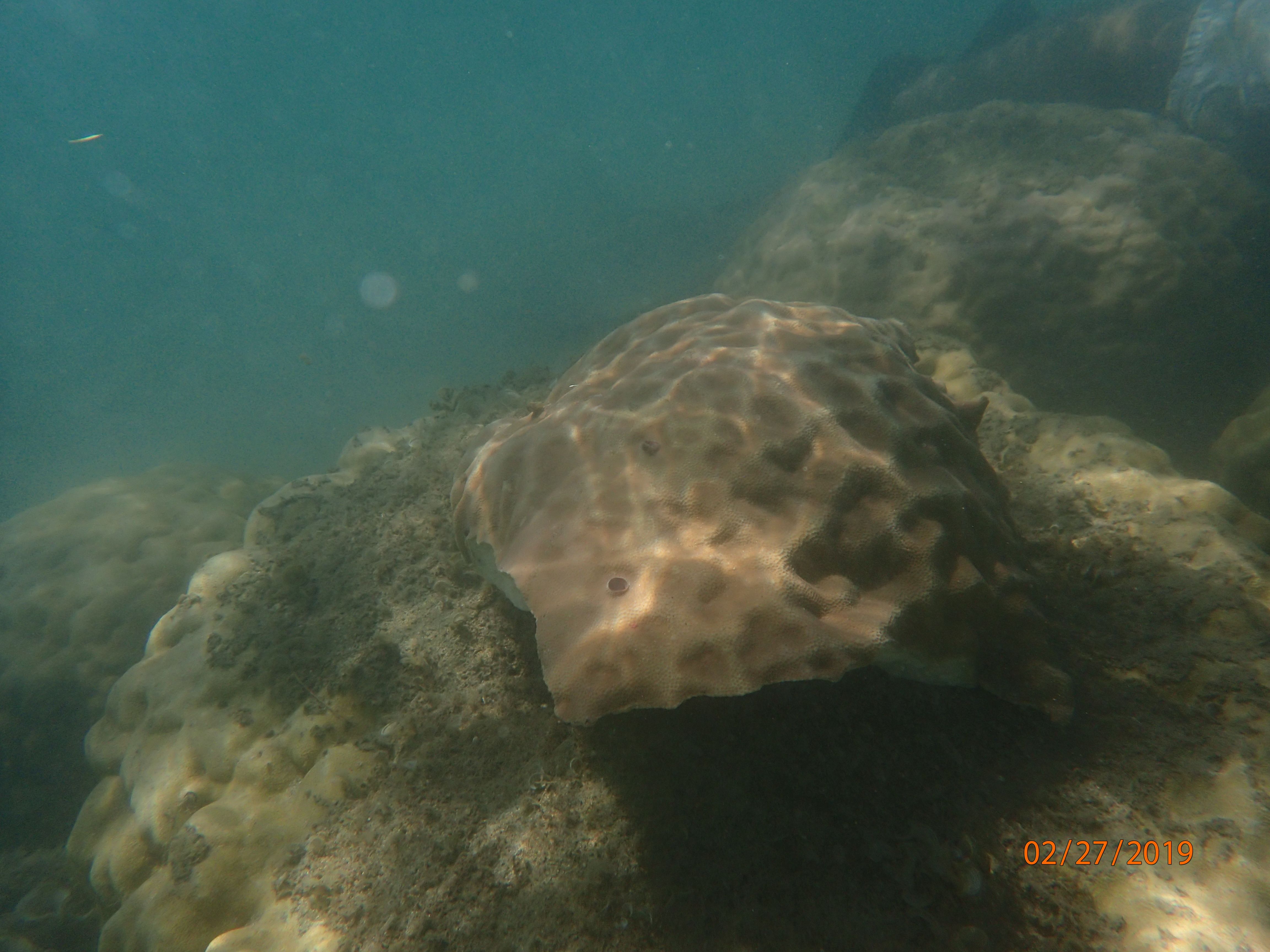
A fragment of coral that was previously on the boat ramp now sits in a better habitat.
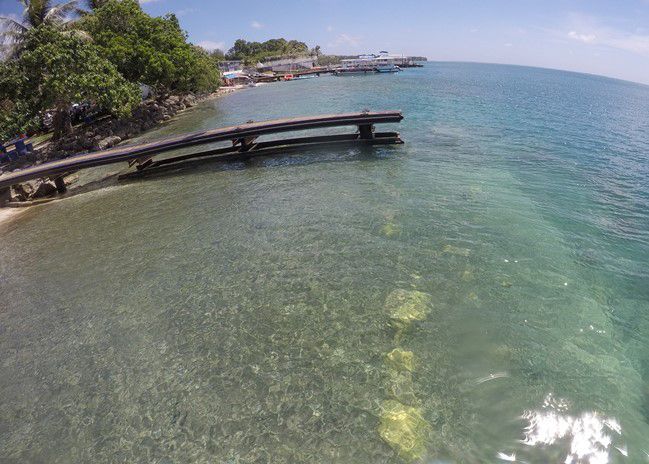
An overhead view of the Merizo Pier shows coral colonies growing at the edge of the ramp.
Recent News
No items to display
